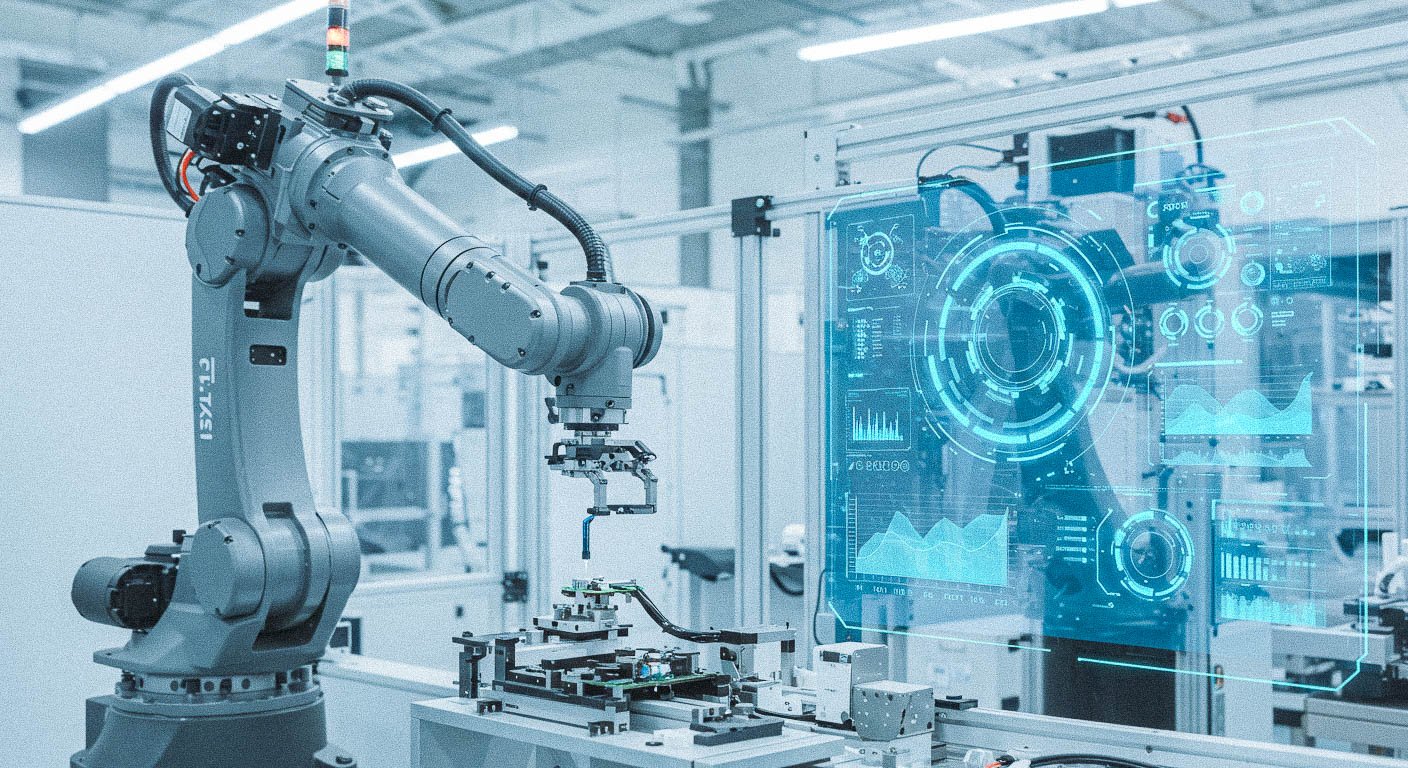The artificial intelligence (AI) and robotics industries are experiencing rapid growth, driven by automation, machine learning, and advanced robotics technologies. From self-driving cars to robotic surgeries, AI-powered solutions are transforming various sectors, including manufacturing, healthcare, logistics, and finance.
Investing in AI & robotics ETFs (exchange-traded funds) is one of the most efficient ways to gain exposure to this booming market without picking individual stocks. ETFs allow you to diversify risk while benefiting from industry-wide growth.
In this guide, we’ll explore top AI & robotics ETFs, practical investment strategies, and key risk management techniques to help you build wealth over the next three years.
📌 Why Invest in AI & Robotics ETFs Now?

1️⃣ AI & Robotics Market Growth
✔ Automation is accelerating → Companies across industries are integrating AI and robotics to cut costs and increase efficiency.
✔ AI technology is improving rapidly → Developments in natural language processing (NLP), generative AI, and robotics are driving adoption.
✔ Governments are investing heavily → The U.S., Europe, and China are funding AI and automation initiatives to stay competitive.
📊 Market Outlook:
- The global AI market is projected to reach $1.8 trillion by 2030, up from $200 billion in 2023 (PwC).
- The robotics industry is expected to grow at a CAGR of 10%, reaching $300 billion by 2028.
💡 Investment Insight: AI & robotics are long-term growth industries, making now an ideal time to start investing.
📌 Top 3 AI & Robotics ETFs to Watch

Investing in AI & robotics ETFs allows you to gain exposure to multiple companies driving the future of automation and machine learning. Here are three top-performing ETFs to consider:
1️⃣ Global X Robotics & Artificial Intelligence ETF (BOTZ)
✅ Key Holdings: NVIDIA, ABB, Intuitive Surgical
✅ 3-Year Average Return: ~18%
✅ Why Invest?
- Focuses on AI, industrial automation, and medical robotics
- Includes leading semiconductor companies like NVIDIA
💡 Best for investors looking for broad exposure to AI & robotics.
2️⃣ ARK Autonomous Technology & Robotics ETF (ARKQ)
✅ Key Holdings: Tesla, Unity, JD.com
✅ 3-Year Average Return: ~15%
✅ Why Invest?
- Actively managed ETF focusing on autonomous vehicles, drones, and AI software
- Higher risk, but potential for high growth
💡 Best for investors who want exposure to disruptive AI-driven technologies.
3️⃣ iShares Robotics and Artificial Intelligence ETF (IRBO)
✅ Key Holdings: Apple, Microsoft, Alphabet
✅ 3-Year Average Return: ~12%
✅ Why Invest?
- Broad exposure to AI-driven tech giants and smaller AI startups
- Balanced mix of large-cap and mid-cap AI innovators
💡 Best for long-term investors seeking a diversified AI & robotics ETF.
📌 How to Grow Your AI ETF Investment in 3 Years

1️⃣ Use Dollar-Cost Averaging (DCA)
Since AI & robotics stocks can be volatile, using dollar-cost averaging helps reduce risk.
📊 Example Strategy:
- Invest $500 per month into an AI ETF
- Over three years, your investment grows regardless of short-term market swings
💡 Why? Helps you avoid buying at market peaks and smooths out long-term gains.
2️⃣ Diversify Your Portfolio
Even though AI & robotics ETFs are promising, it’s essential to maintain a balanced portfolio.
📊 Example Portfolio Allocation:
- 40% AI & robotics ETFs (BOTZ, ARKQ, IRBO)
- 30% Broad market ETFs (S&P 500, Nasdaq 100)
- 20% Dividend & bond ETFs (for stability)
- 10% Cash (for buying opportunities)
💡 Why? A diversified portfolio reduces risk while allowing AI investments to grow.
3️⃣ Monitor Key AI & Robotics Trends
To maximize gains, stay updated on technological advancements, earnings reports, and regulatory changes.
✔ Track AI hardware innovations (e.g., NVIDIA’s AI chips)
✔ Follow autonomous vehicle development (Tesla, Waymo)
✔ Watch corporate AI adoption (Microsoft, Google AI)
💡 Why? Understanding industry shifts can help you make informed investment decisions.
📌 Risk Management: When to Adjust Your AI ETF Investment?

While AI & robotics ETFs offer strong growth potential, they can also experience short-term volatility. Here’s when to rebalance your investments:
✔ If AI ETFs surge over 40% in a year, consider taking partial profits and reallocating funds.
✔ If interest rates rise sharply, technology stocks may drop—adjust your exposure accordingly.
✔ If AI companies underperform earnings expectations, reassess your ETF holdings.
💡 Key Tip: Stick to your long-term strategy while adapting to market conditions.
📌 Who Should Invest in AI & Robotics ETFs?
✅ Investors looking for high-growth opportunities in emerging technology
✅ Long-term investors who can tolerate short-term volatility
✅ Those who prefer ETF diversification instead of picking individual AI stocks
AI & robotics ETFs provide an excellent way to capitalize on future technological advancements without excessive risk. By following a structured investment strategy, you can grow your wealth steadily over three years.










